What’s in Your Livestock Shed? visits a £250,000 lambing shed
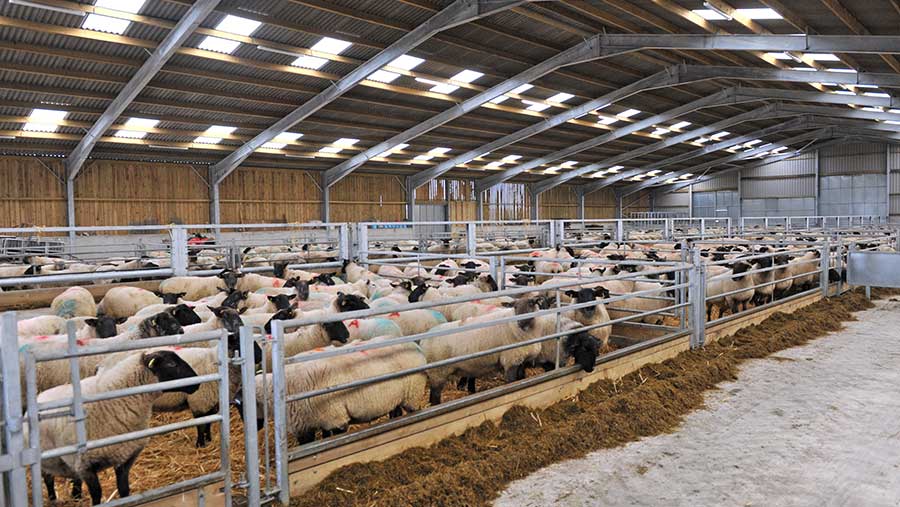 The shed is purpose-built for lambing, but can accommodate beef cattle too
The shed is purpose-built for lambing, but can accommodate beef cattle too A Welsh family farm is future-proofing its sheep enterprise with a £250,000 investment in modern housing that allows its flock of 1,400 ewes to be lambed under one roof.
Alan and Catrin Williams’ three sons – Dafydd, Wiliam and Ieuan – have all joined them in their 316ha livestock farming business near Pwllheli in Gwynedd.
This has meant upscaling the sheep and beef enterprises, tourism diversification and investing in facilities that improve efficiency and performance.
At lambing, ewes had been housed in four separate buildings, some of which were not well designed for this purpose, and this had put a strain on labour and flock health.
See also: What’s in Your Livestock Shed? visits a £1.36m robotic dairy
Farm facts
- 450 Charolais cattle – 80 suckler cows and bought-in strong stores
- 1,400 Suffolk cross Mules put to Texel
- Lambs creep-fed from three weeks to ensure they are sold by mid-June
- Frees up grass for cattle
- Lambs are sold to Morrisons and APB
- Farm is in Glastir Advanced
- 36ha of spring barley and 4ha of winter barley grown
- Soil is light to clay
- Also runs a campsite and two holiday cottages
Part-funded by a Welsh government Sustainable Production Grant, the family invested in a new shed last year, purpose-built for lambing, but with the flexibility for finishing beef cattle too.
This has transformed lambing, as we discovered when the family gave us a tour of their new facilities.
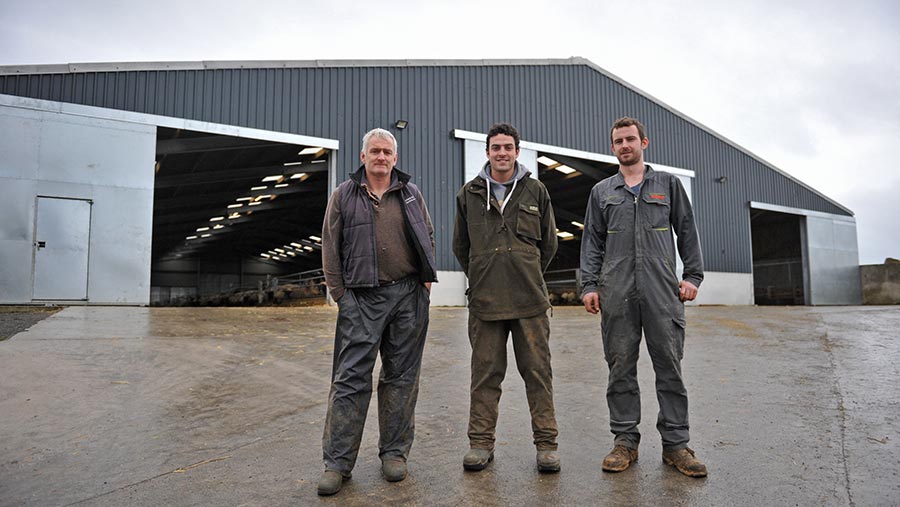
Alan, Wiliam and Dafydd Williams
How did you design the building?
We had been planning it for five years, so it gave us the opportunity to pick up some of the best ideas from sheds on other farms we visited during that time.
Our builder also had some good ideas, so it was a combined effort.
What was your initial budget and did you stick to it?
£250,000 and yes. We were very lucky to get 40% of the project funded by a Sustainable Production Grant.
We would still have built a shed without this, but not on this scale.
Who constructed the building?
Elfed Engineering of Cerrig-y-Drydion. It took two-and-a-half months to build.
Tell us about the shed’s specifications
It is a clear span building, measuring 60m by 33m and 4m to the roof eaves.
We wanted clear span because it gives flexibility to be adapted in the future should we need to – all the posts are in sleeves and can be removed with the fittings in a single day.
Having no girders makes bedding a lot easier – what we have allows for one continuous flow at bedding.
One-quarter of the shed has a plastic slatted floor with a 1.2m-deep underground manure tank that should only need to be cleaned out every two years.
We didn’t have slats in all the pens because they are specifically for sheep and we want to use half of the shed for housing cattle when it is not in use for lambing.
Cost was another consideration – it was £25,000 to slat the area we covered.
Shed specifications
- LED lighting
- Six sliding doors to protect from strong winds
How many sheep does the shed house?
It houses 850. We lamb 1,400 sheep, but in two groups. The first group lambs in the first three weeks of February and after that we lamb the shearlings and the 6% of ewes that repeated at tupping.
There are 20 lambing pens and 150 small pens.
We house according to the weather, but mostly it is in the second week of December; six weeks before lambing.
How do you group the ewes at housing?
The triplets, twins and singles are penned separately and fed a different ration.
The triplets are opposite the singles for ease of fostering.
We have designed the individual pens for the triplets to be larger – they are 1.5sq m; the pens for the twins are 1.5×1.2m.
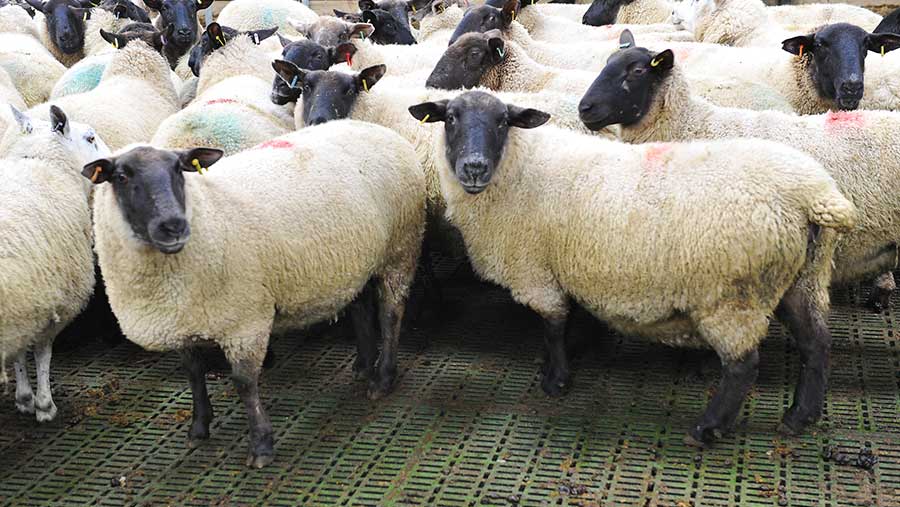
Twins are penned separately
Has any design aspect helped improved animal performance?
TMR ration
- 300kg maize
- 270kg protein blend
- 220kg barley
- 150kg soya
- 0.025kg minerals
We have three, 60m feed passages that allow us to feed a total mixed ration (TMR).
We already had the mixer wagon for feeding the cattle, so there was no additional cost for machinery.
We feed once a day, in the morning, and push the silage up twice during the day. It takes half-an-hour a day for one man to mix and feed – it used to take two men an hour a day and involved carting the concentrates around in a wheelbarrow.

Three feed passages allow a TMR to be fed
With TMR, the ewes always have feed in front of them and there is no stress at feeding times, so they are a lot healthier and, because they don’t overeat, we don’t get any cases of prolapse – we used to get 15-20 and some very severe cases.
We also had very few cases of calcium deficiency. Having feed constantly available means the shy feeders get plenty of feed too.
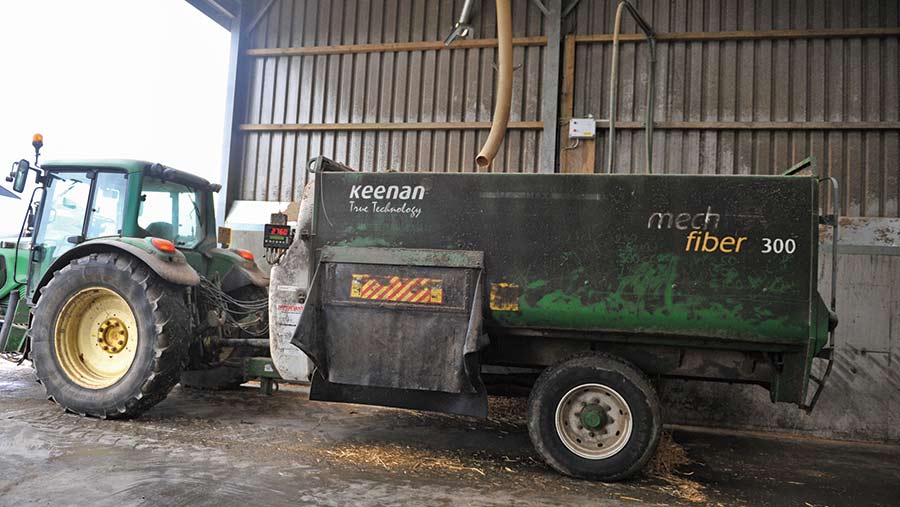
It takes one person half an hour a day to mix and feed the TMR
Which features have helped ease management?
We have positioned the lambing pens next to the individual pens, so there is only a short distance to move the animals between the pens.
Foot health has been good on the slats and it means we use less straw overall.
What’s your favourite feature?
The water supply in the individual pens that Elfed designed.
There are 10cm pipes as troughs, but we had to cut the pipes in half because there are passages between the sets of pens, so there is a ball valve between these to allow water to flow to each of set of lambing pens.
There is a plug at the end that allows us to flush the pipe if a ewe fouls the water.
We used to carry water to the small pens in buckets, so this is a huge labour saving.
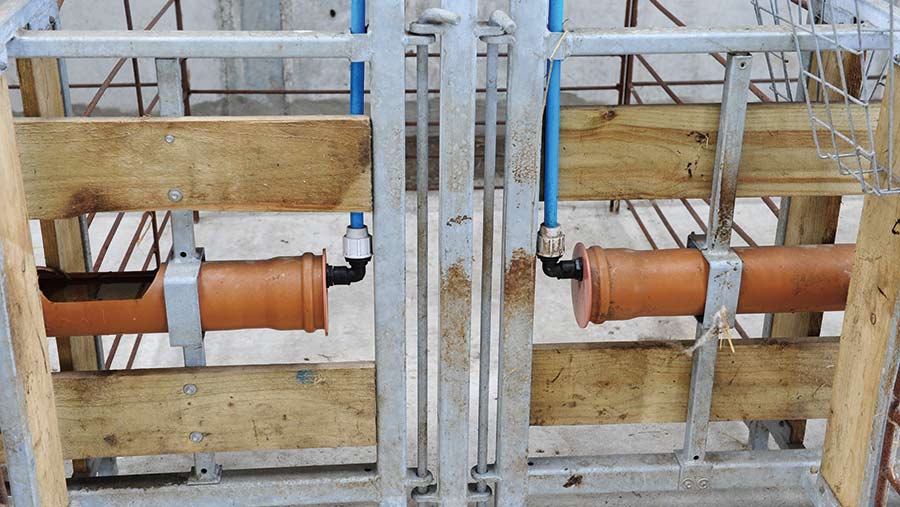
10cm pipes are used as water troughs, with ball valves between pens
What couldn’t you live without?
Six wheeled gates that run between the lambing pens and the individual pens.
When we move the ewes and lambs from the lambing pens, the ewes can be flighty, but the gates allow us to filter them from one pen to the other.
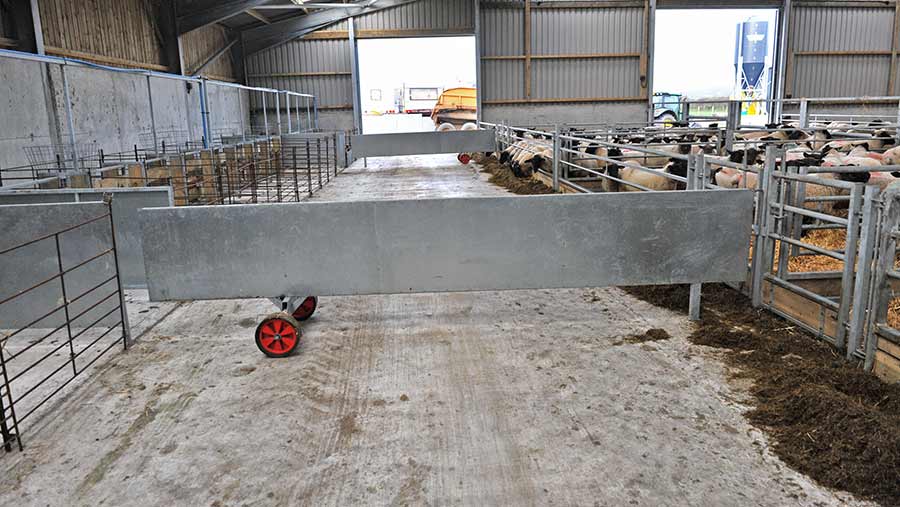
Gates are used to filter ewes and lambs from the lambing pens
There is also a concrete lip running between the lambing pens and the individual pens that prevents the water from running onto the ration in the feed passage when we pressure-wash the individual pens.
We clean the pens after every ewe and we try to pressure-wash a block of 30 pens every fortnight.
